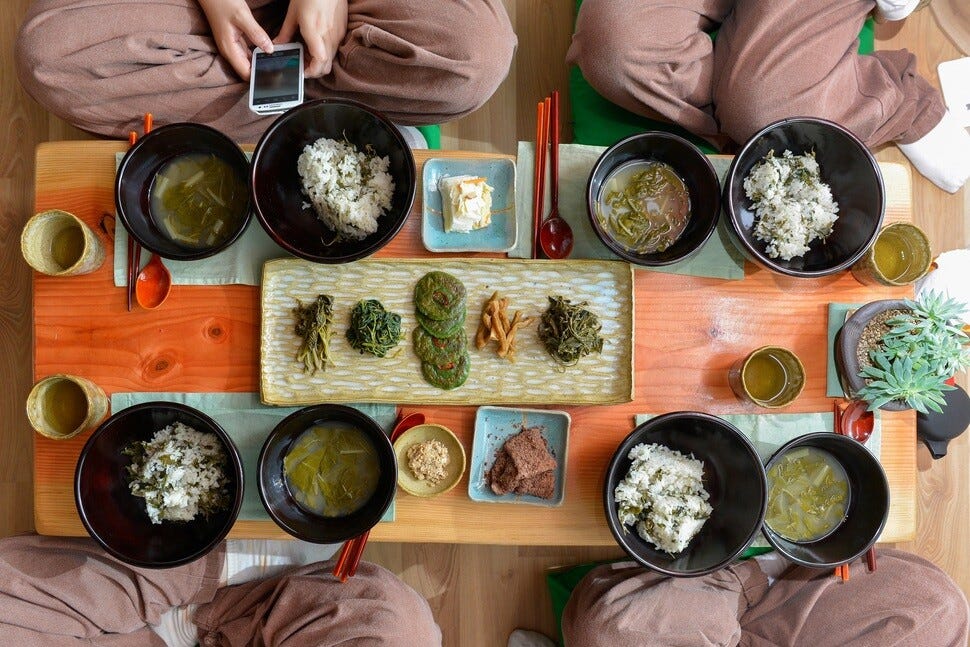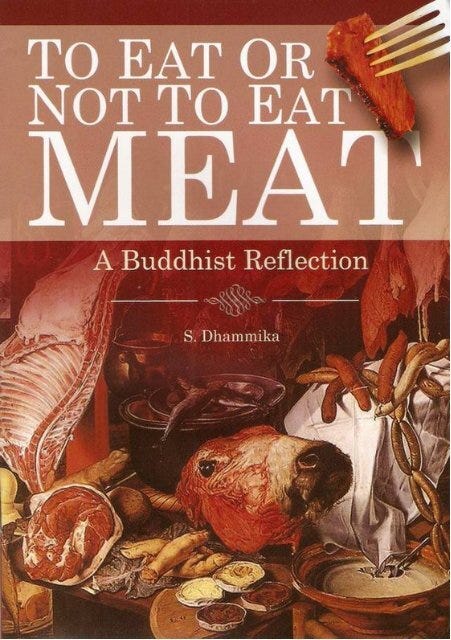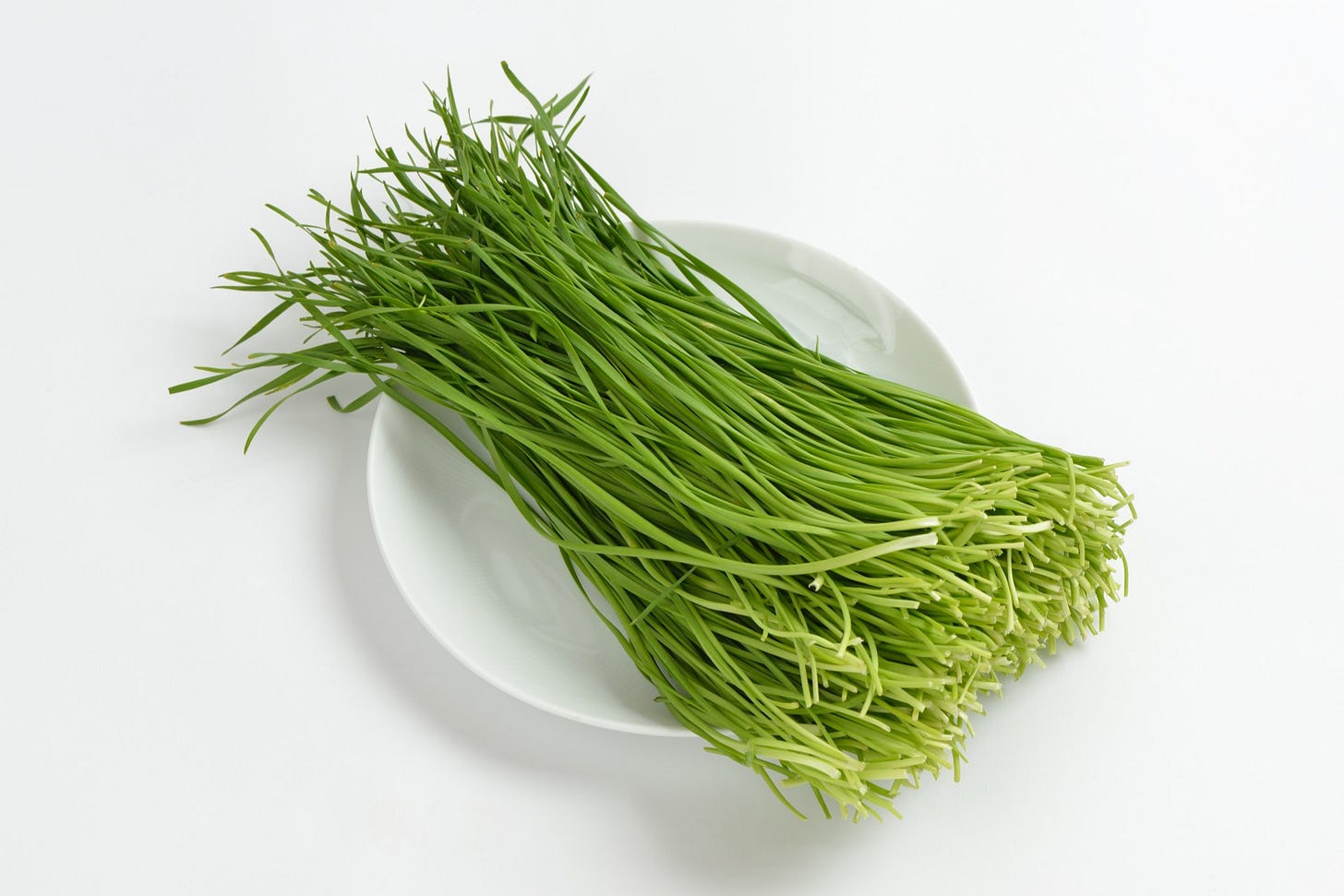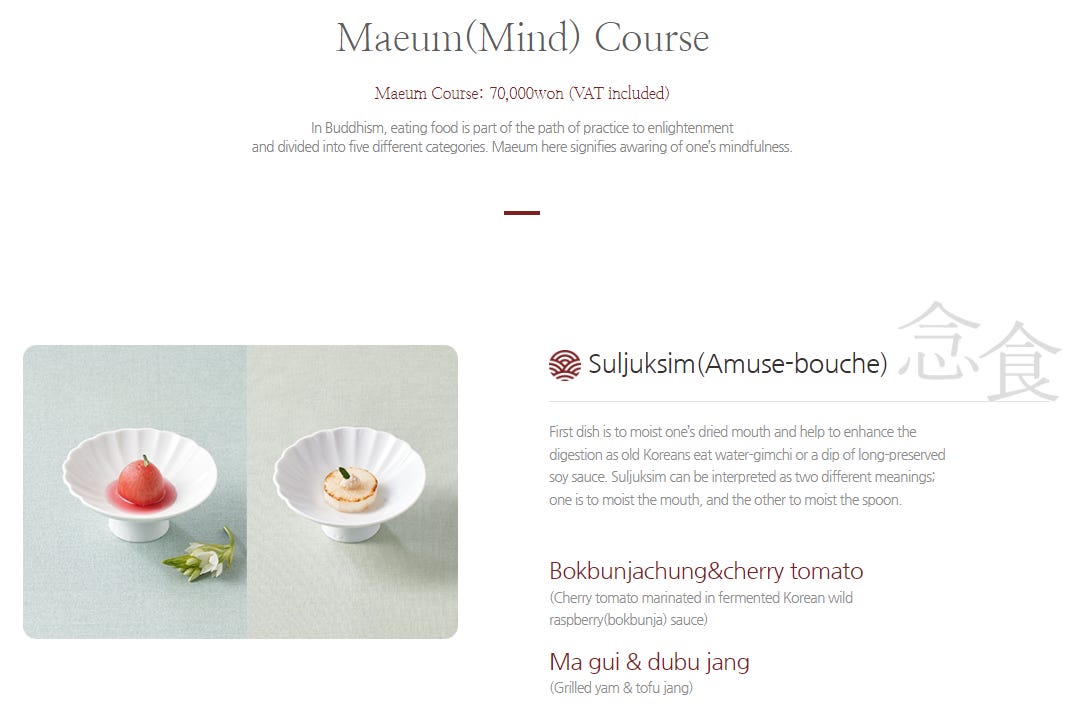Buddhist Vegan Cuisine of Korea
Buddhist vegan food… Do you think that’s redundant? Buddhist food by definition is vegan, right? Well, not necessarily.
Known by a few names—Shakyamuni, Siddhartha Gautama, Gautama Buddha, or Seok-ga-moh-ni (in Korea, 석가모니)—Buddha himself consumed meat and at times even recommended it to sick people to gain strength.
In a way that’s sort of similar to how there are Shiites and Sunnis in Islam, and different denominations in Christianity such as Protestant, Catholic, Greek Orthodox, among others, Buddhism also has two main sects—Theravada and Mahayana. I won’t get into the philosophical differences between the two because I don’t know much about them, but they’re largely separated by geography.
Theravada (or, sometimes called “small vehicle” or “Southern”) Buddhism is practiced in Southeast Asian countries like Sri Lanka, Myanmar, Thailand, Cambodia, and Laos (but not in Vietnam). Mahayana (“grand vehicle” or “Northern”) Buddhism reigns in China, Korea, and Japan.
With respect to this specific topic, however, the biggest difference between the two is that Southern Buddhists eat meat while their Northern counterparts in East Asia do not. Korean Buddhist monks are forbidden to eat any kind of meat and are strictly vegan, although there are a few maverick monks that do not subscribe to this edict.
Anyway, we’re here to talk about the Korean brand of Buddhist vegan cuisine, so let’s focus on that. 사찰음식 (sah-chal-um-shik), quite literally “Buddhist temple food,” has been developing (and still is) over a thousand years in Korea and preparing the vegan meals has been considered one of the ways of practicing Buddhistic teachings and values. Quite obviously, it relies heavily on the local and indigenous vegetables and fruits.
Just as important as not eating meat, Korean Buddhist cuisine MUST stay away from 5 vegetables/ingredients called 오신채 (oh-shin-chae, 五辛菜, five spice-y vegetables). They are,
마늘, garlic,
파 (양파), green onions (and onions),
부추, Korean chives called boo-choo,
달래, Korean indigenous wild shallot/garlic called dal-lae, and
아위, something called ah-wi (asafetida) that doesn’t exist in Korea.
These 5 very aromatic or pungent ingredients are expressly forbidden in the Buddhist scripture, as a literal teaching from Buddha himself, because these will rile up anger when eaten raw and stoke wanton desires when eaten cooked, two of the emotions most harmful in meditating and trying to achieve enlightenment.
Curiously though, there is one quintessential Korean ingredient that should be banned by Buddhist teachings but is not. Can you guess what that is?
It is chili powder/flakes 고추가루. One of the most aromatic and strong-tasting vegetables fruits there is. And yet, it’s not one of the forbidden 5. Interesting history behind this one—chili peppers (고추) weren’t introduced to the Asian continent until the 16th century!! Buddha obviously didn’t know such a thing existed when he was alive back in the 6th century BCE. So, from my last week’s posting, gochu-jang is a relatively young—only a few hundred years old—Korean condiment.
I know what you’re asking. Kimchi as we know it today (the red kind) was developed only after the 16th century. Before then, it used to be the white kind.
Let’s get back to the topic at hand. Truth be told, however, this chili powder thing is in the gray area for the Buddhist gastronomy and is up for debate. Not my place to argue for or against. The more relevant question for us is, how do they make kimchi at Buddhist temples? If you remember my old post about kimchi, you have to use the fermented fish called jeotgal (젓갈) to bring out the deep flavor, but obviously you can’t use it at the temples.
It turns out that dwaen-jang (된장) is used in place of jeotgal (젓갈) to help kimchi’s fermentation process, along with salt, and ripened persimmon of all things. I myself have never had vegan kimchi but it’s supposed to have a very clean taste, as opposed to a deep, complex flavor of regular kimchi made with jeotgal.
As you can see, it looks no different from the secular kimchi, and notice the liberal use of chili flakes.
I’ll introduce to you one well-known restaurant in Seoul that specializes in Buddhist vegan cuisine, but I don’t want to mislead anyone into thinking that that’s how the monks eat. Far from it, their meals are almost always very austere.

Noodles with soup (칼국수) is said to be one of the regular menu items as well, along with rice cakes (떡) and bibimbap (비빔밥).
In Buddhist doctrine, consuming food should not be done to satisfy the five senses, but to simply maintain the health of a physical body in route to achieving enlightenment. This is why some people criticize the Buddhist vegan food as being bland—it’s like people complaining about the sky being blue.
Be that as it may, as a practicing monk, there are five levels of eating meals that’s too nebulous in philosophy that’s hard to understand—I couldn’t explain it. It goes from meditating level (lowest) to nirvana level (highest).
In downtown Seoul, there is a Buddhist cuisine restaurant called Balwoo Gongyang (발우공양). It earned the prestigious Michelin 1 Star rating in 2017 and 2018 but has lost it since. Gong-yang is a Buddhist word for meals and bahl-woo (발우) is the wooden bowls used for rice and soup, pictured above. You can visit their website by clicking here, but I’ll show you what they have on their menu for convenience although I know this is a questionable practice.
They have commercialized the idea of the 5 levels of eating meals into increasingly more expensive course meals. Regardless, let’s take a look at their 3rd level course, priced 70,000 KRW (~ $50). Again, visit their website for a better look.
Unlike the Japanese language, Korean is notoriously difficult to romanize into English and hard to pronounce.
Because it’s been developing for over a thousand years with Buddhist influence, it is no wonder why people call Korean food the best alternative if you happen to be a vegan or vegetarian.















